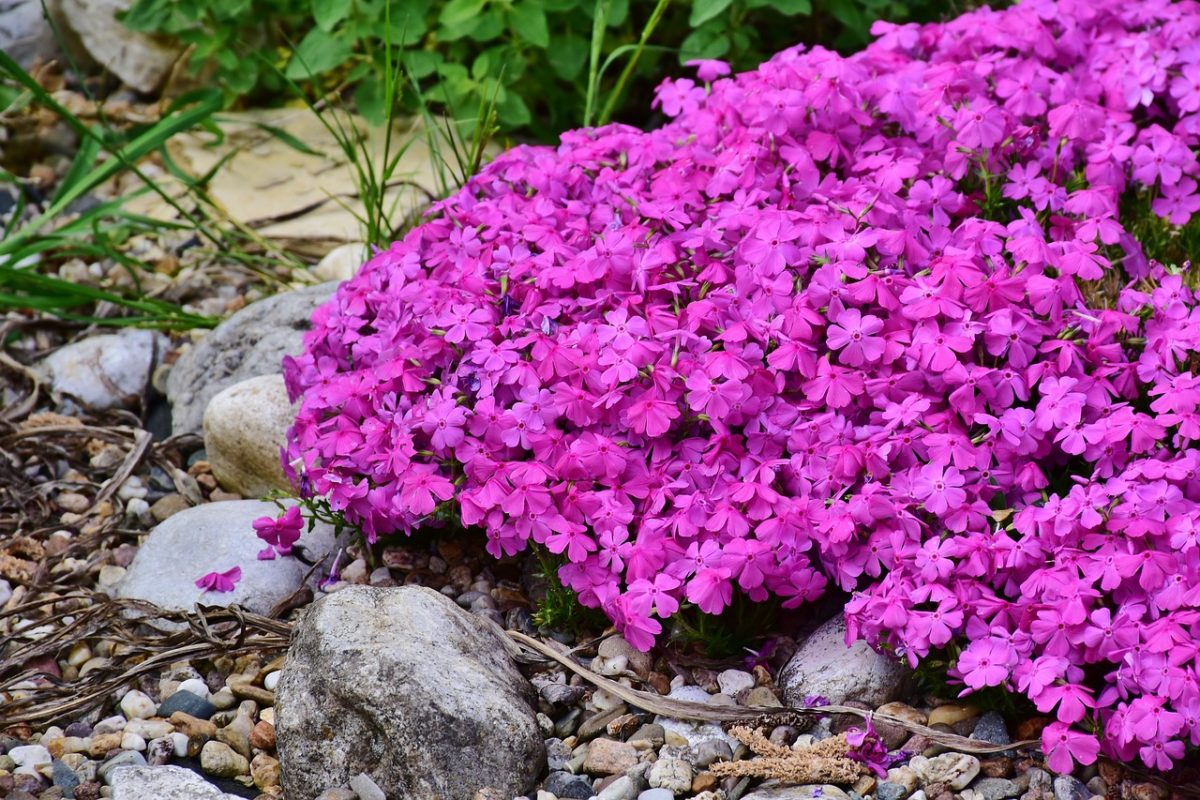
What and what are ground cover plants
The ground cover plants they are all those that develop in a compact and dense way they completely cover the whole ground in which they are grown for ornamental purposes.
They differ from each other for:
- dimensions,
- bearing,
- presence or absence of flowers,
- root type,
- height, some are just over 5 cm high; others exceed 50 cm,
- ground cover shrubs and some bulbous or rhizomatous plants.
Most of them develop mainly in width, forming dense soft cushions with erect or drooping stems covered with evergreen or deciduous foliage depending also on the pedoclimatic conditions of the place and often do not require particular cultural care, i.e. they tend to remain in the garden over time without the need for care and with the great advantage of consolidating the surface layer of the soil, therefore they are also ideal for inaccessible places with little soil or not suitable for the cultivation of other more demanding plants.
Read also: Climbing plants perfect for balconies and terraces

When to use ground cover plants
Ground cover plants are used:
- when you want to create a turf different from the classic lawn;
- cover low flower beds;
- cover passageways and paving;
- surround the feet of tall trees;
- cover fence walls;
- beautify even the most inaccessible areas of the garden or areas that are difficult to reach;
- maintenance cannot be constantly ensured;
- you want to consolidate a type of soil to prevent landslides or its depth does not allow adequate development of the root system;
- if the time available is short and the care required does not satisfy the cultural needs of other more demanding plants.
Let’s see which are the ornamental ground cover plants suitable for covering areas of the garden, which resist the cold, parasites and which do not require particular cultural care.
Alchemilla
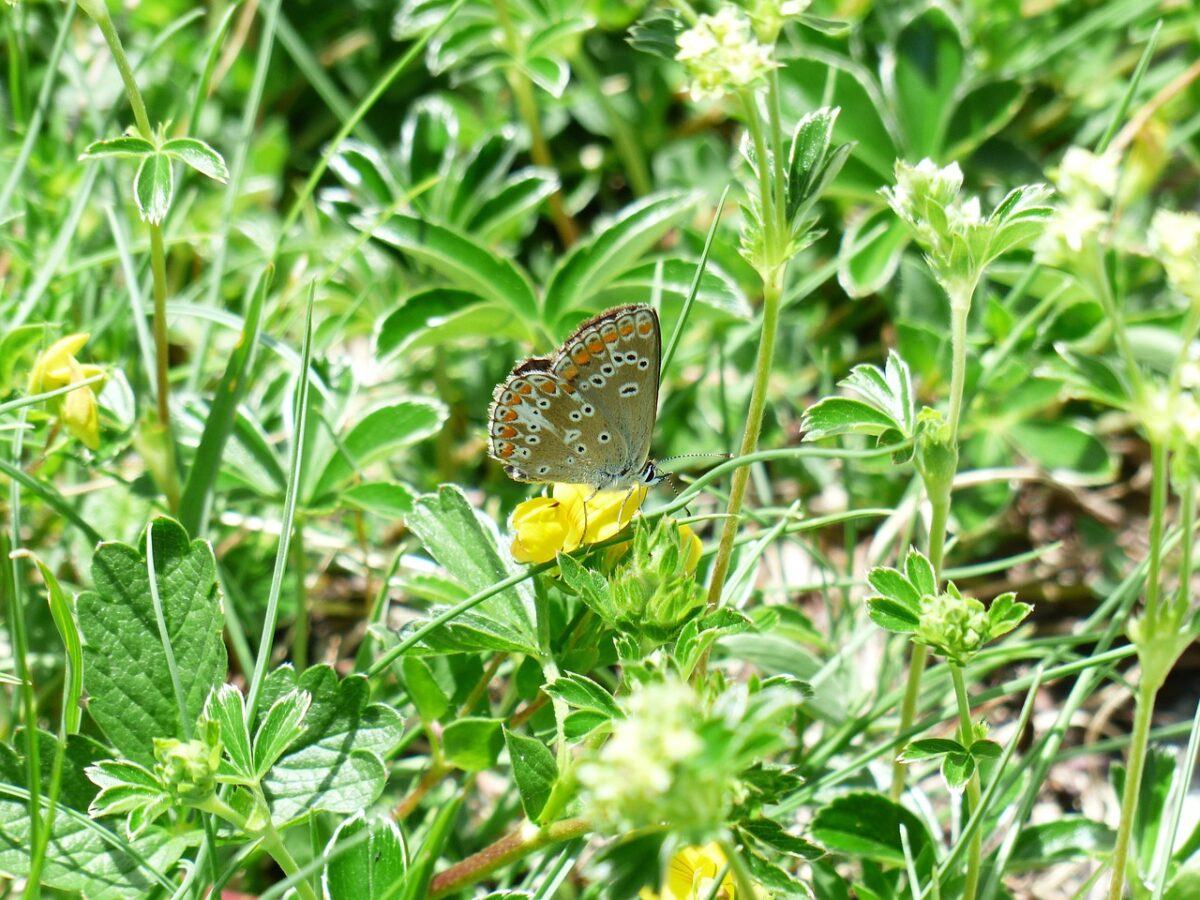
A plant of the developing Rosaceae family ground cover with rhizomatous root, stems or upright or ascending stems about 50 cm high covered with numerous dark green palmate leaves grouped in a rosette and flowers, grouped in corymb inflorescences, present for the whole summer. It is a ground cover species widely used in gardens to cover the soil.
Cultivation sheet: Alchemilla.
Phlox

You may be interested in: Ornamental cabbage cultivation
Also known as pink moss is a carpet that forms thick cushions made up of numerous small flowers. It does not require pruning or other maintenance care.
Cultivation sheet: Phlox.
Sagina subulata

A perennial ground cover plant that forms soft, very thick, crawling lawns. The moss-like leaves are bright green in contrast to the pure white of the starry flowers. It is resistant to cold but does not tolerate water stagnation.
Sedum acre – Fussy herb
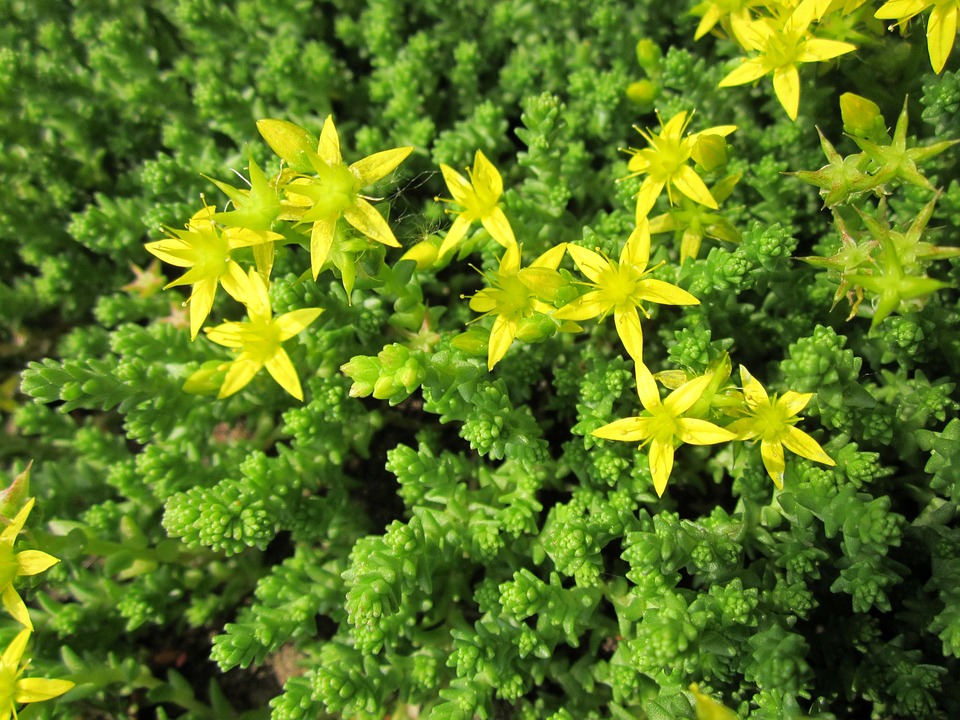
This beautiful ground cover herbaceous variety also commonly called Borracina acrid, is an evergreen succulent plant, suitable for carpeting rock gardens, easy to grow even in pots or in planters. It is sown at home in the spring period; it resists cold up to 15 ° C below zero and, even if it prefers full sun, in areas characterized by hot and humid summers, it should be planted in areas of the garden exposed to partial shade.
Do you have problems with plants? Join the group
Cultivation sheet: Sedum acre – Fussy herb.
Japanese thrush – Ophiopogon- japonicus

The Japanese lily of the valley, Ophiopogon japonicus, is a herbaceous plant of rare beauty that forms a herbaceous tuft about 20 cm high, composed of numerous leaves leathery ribbon-like dark green color. During the flowering period it produces flowers, similar to lilies of the valley, gathered in small racemes of white, pink or purple color followed by beautiful round cobalt blue berries containing small greyish seeds.
Cultivation sheet: Lily of the valley of Japan.
Soleirolia soleirolii

It is a beautiful fast growing evergreen ground cover plant, native to the Mediterranean area. It has a creeping or prostrate habit and in a short time it forms dense lawns, a few centimeters high, with bright green heart-shaped leaves. In summer it produces small roundish white-pink flowers. It should be cultivated in shady areas with constant humidity, but the growing medium must be well drained to avoid dangerous water stagnation.
Cotoneaster
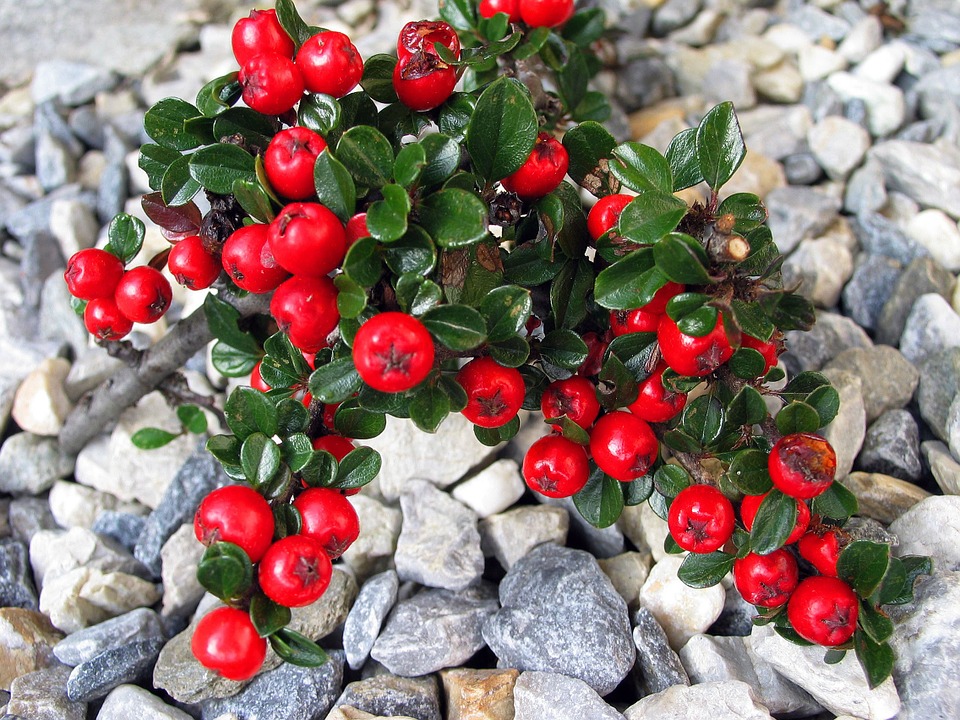
There are several varieties of this plant but all very decorative and appreciated for the production of small red berries that liven up the winter garden. It produces clusters of flowers followed by inedible fruits which are toxic if swallowed.
Cultivation sheet: Cotoneaster.
Lysimachia

Another perennial herbaceous perennial with a creeping habit of the Primulaceae family commonly called quattrina or quattrinella grass. It has a very rapid growth, it has creeping rooted stems and pairs of small light green, almost yellow-green, and rounded leaves. It is suitable for covering transit areas and for upholstering even large surfaces.
Cultivation sheet: Lysimachia.
Cotula
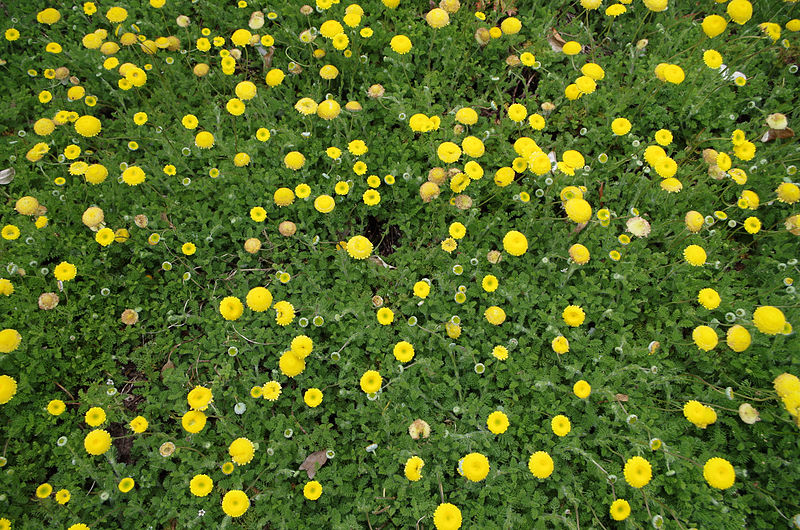
Also called Leptinella squalida, it is a perennial herbaceous plant that belongs to the Asteraceae family. It has a ground cover with green and shiny leaves which during the flowering period contrast with the deep yellow color of the numerous flowers similar to golden buttons. It spreads very quickly, is resistant to bad weather and tolerates any type of soil.
Cultivation sheet: Cotula.
Heather

A shrubby ground cover that also adapts to partial shade and is perfect for creating flower beds. It does not require special care and is resistant to cold.
Cultivation sheet: Heather.
Lonicera pileata

A perennial, evergreen ground cover plant consisting of stems that crawl across the ground. It should be grown in partial shade and is able to survive even at several degrees below zero.

Aubretia
A plant that does not exceed 15 cm in height and tends to form large ground cushions thanks to the dense foliage formed by numerous herbaceous stems covered with small gray-green leaves covered with a light down. In the flowering period it forms small pillows flowers white, pink, red, purple and blue with single or compound corolla, depending on the species.
Cultivation sheet: Aubretia.
Iberis
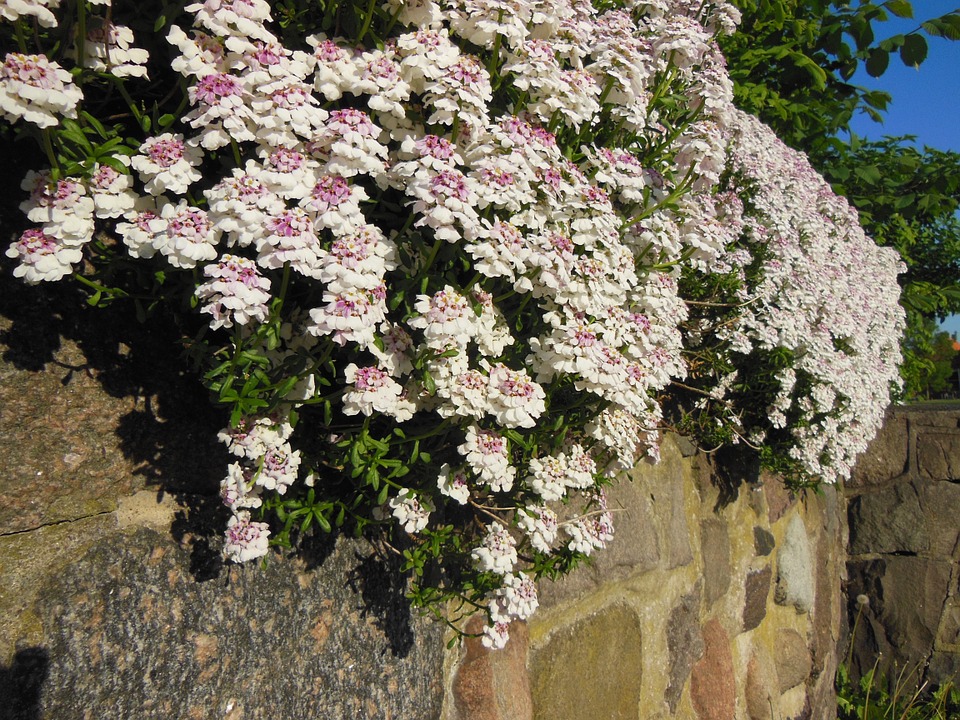
An evergreen perennial herbaceous plant with ground cover, also suitable for flowering borders. Only about thirty cm high, it expands to form real flower cushions that cascade down. It blooms in spring and in summer it goes into partial rest.
Cultivation sheet: Iberis.
Campanula

A very decorative plant thanks to its bright green foliage and bell-shaped flowers. It needs fresh or slightly humid soils characteristic of the Mediterranean areas.
Cultivation sheet: Campanula.
Hypericum

A very decorative herbaceous plant also called St. John’s Wort. It is an evergreen seed that produces starry gold colored flowers from spring to autumn. it grows well in any type of well-drained soil. It is appreciated as a medicinal plant for the treatment of flu symptoms and also as an anticancer.
Cultivation sheet: Hypericum.
Vinca

A herbaceous plant with glossy, deep green leaves and blue-violet or even white flowers. In full vegetative growth it forms thick flowered cushions of rare beauty. It is an evergreen ground cover plant that grows well in slightly humid soils and in semi-shaded positions.
Cultivation sheet: Vinca.
Walkable ground cover plants
Herniaria
It is a small evergreen ground cover plant with slender stems covered with light green leaflets. It grows close to the ground and is also suitable for passageways. It does not require care and does not need pruning.
Cultivation sheet: Herniaria.
Dichondra
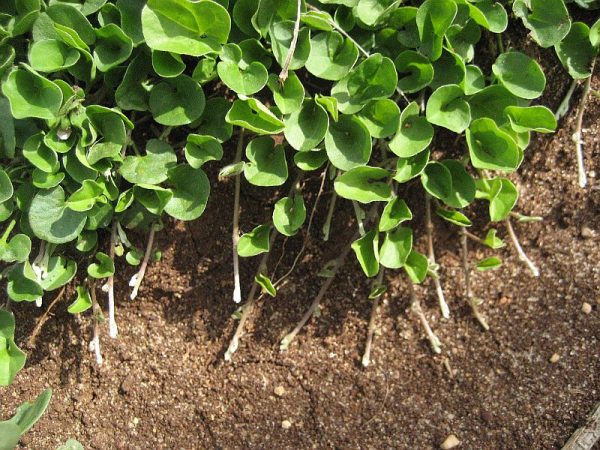
It is a beautiful herbaceous plant with a creeping habit that reproduces easily by itself, even walking among paving stones and stones.
Cultivation sheet: Dichondra.
Veronica liwanensis

A small evergreen perennial herbaceous plant 3.5 cm high, with creeping stems covered with small rounded leaves of an intense green color. From August to October it produces small dark blue flowers. It grows well in common well-drained garden soil and prefers full sun as an exposure. It is a rather close relative of the common spontaneous veronica of our spring meadows. It grows well in the sun, loose soil with a good mineral content but low in organic matter, rain in winter and dry but cool summers.
Cultivation sheet: Veronica.
Meehania

It is a ground cover perennial 10-15 cm tall, with wrinkled heart-shaped leaves and very fragrant blue-violet flowers that bloom in spring from March to May. It loves rich, well-drained soil as an exposure it prefers full sun or partial shade.
Ajuga reptans

Bugola or Ajuga reptans is perhaps the best known and most cultivated creeping plant with very low size. There are numerous cultivars, with green leaves, bronze, variegated with pink and white, with blue, light blue or pink flowers. It is also called San Lorenzo grass.
Cultivation sheet: Ajuga reptans.
Aromatic ground cover plants
If, in addition to beautifying your garden, you also want to breathe a pleasantly scented air, there are aromatic plants that respond well to the required sheets and which, among other things, are also edible and give wonderful colors with their luxuriant blooms.
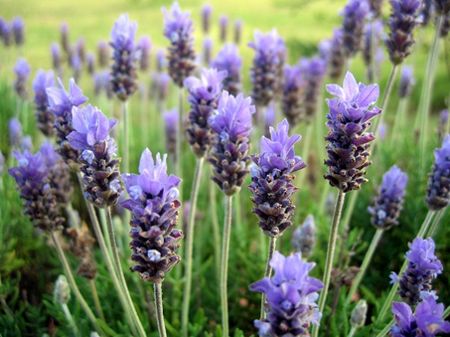
Lavender
A Mediterranean plant that is also grown in pots to embellish and perfume balconies and terraces. It has a shrubby habit and the numerous stems are covered with gray-green foliage and flowers …

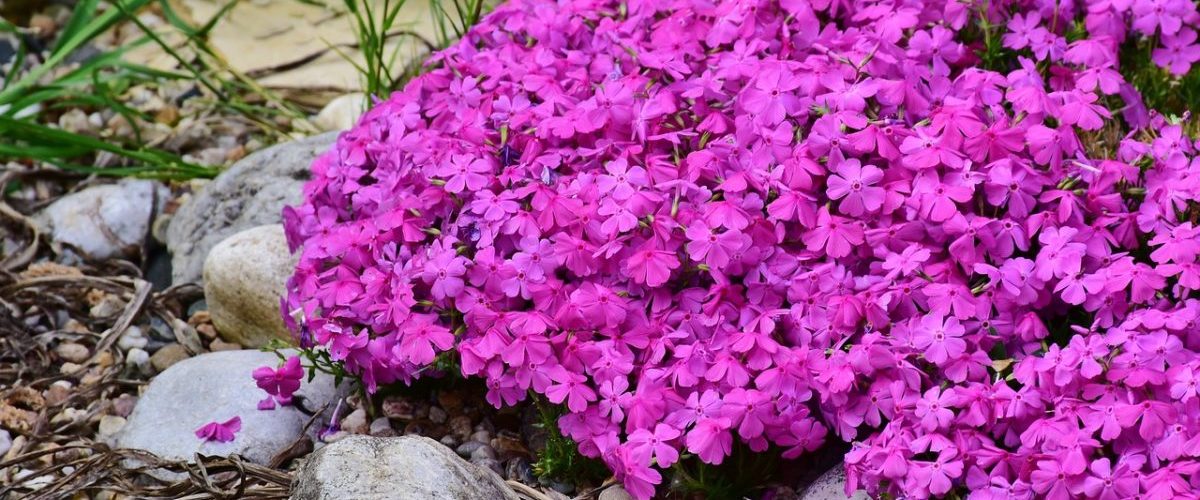

Add comment